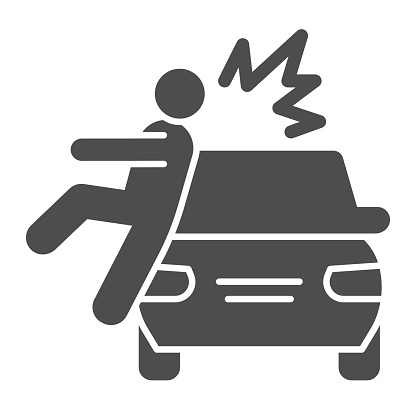So it’s best to always be the last pedestrian in the line. OK, got it.
Last time I heard about it it was 50-60% fatality at 50km/h, but only 3% at 30km/h.
Maybe depends on which country the data comes from.
Anyway, 30km/h in the city is a given.
Also gonna depend on the car. The oversized lifted truck is gonna kill more reliably than a mid sized sedan
I think the info was from sweden, maybe volvos are more cushiony :-)
The country also factors into it because inertia depends on weight and increases exponentially by speed so if there are more trucks and SUVs, that rate goes up rapidly. The average car size also increases YOY, so it’s continually getting more fatal to be hit by a car.
What version of the trolley problem is this
Two tracks, one with 50 people tied where the switch is currently set, and the other with somewhere between 0 and 5 people tied. You could switch the trolley to the other track…
…but the trolley passengers would be upset at you because they’d be 4 minutes later to work every day. Oh no.
30 km/h is 8.3 m/s, are you implying the driver reaction time is 2.5s? Or is this chart for mentally challenged drivers?
I’m trying to figure this out too. Those distances seem really suspicious. At 30km/h, I’m pretty sure I can stop my (admittedly small) car in less than 1 car length. Maybe half a car length, something like 2m? Way less than 9m.
And looking at 60km/h, that’s 17m/s and they are claiming a 43m stopping distance. That would be like hitting the breaks and your car just slides on the pavement for 2.5 seconds, traveling the distance of an Olympic swimming pool, before stopping. That’s only reasonable in the worst possible driving conditions. Or maybe with an enormous and heavily loaded vehicle?
Or maybe I’m being too optimistic here? Maybe these are numbers from actual accidents and in real life people hit the break slowly at first and stuff like that?
Please check out my other replies. :)
Sure, if someone says 3-2-1 brake and you’re expecting a test. But that’s now how people react while driving every day.
I get that my performance will change depending on whether I’m expecting a test or not. But I think if my car has its breaks slammed, it’s going to stop in less than 9m starting at 30km/h, regardless of whether it’s expecting it or not. It’s the stopping distance that I’m feeling is larger than it should be.
A couple questions. Is the stopping distance in this diagram the distance the car travels after the driver has completed their reaction time and started hitting the breaks? And where does the value from this distance come from?
I wouldn’t have thought to ask you before. A lot of times people just post things they find online that impact them in some way. But you seem to have a lot of knowledge that goes beyond just seeing this image.
And, anecdotally, I was driving late last night and an animal jumped out into the road ahead of me. I would like to avoid hitting an animal just as much as hitting a person. But I didn’t immediately slam on my breaks to stop the car as quickly as possible. I gradually squeezed that break pedal until I was rapidly slowing. So maybe my assumption about stopping distance is wrong. Maybe the car can stop faster, but when driven by average people it doesn’t, simply because average drivers don’t stop optimally.
Yep. 2.5s is the average perception reaction time. This includes
- Perceiving the person
- Understanding the situation and thinking about whether you need to stop
- Moving your foot to the brake pedal
Keep in mind, most people feel comfortable driving and not expecting to have to make an emergency stop at all times. Sure, you’d be ninja-fast if you were in some test environment where you expected the hazard and were trigger happy on the brake but that’s not the real world.
A few US states, including California, have adopted a standard driver reaction time of 2.5 seconds. The United Kingdom’s Highway Code and the Association of Chief Police Officers ACPO Code of Practice for Operational Use of Road Policing Enforcement Technology use 3.0 seconds for driver reaction time.
its interesting how the change is so dramatic between 40 and 50, compared to the other values, I wonder why that is
Quite likely where the limit of the sturdiness of bones and organs lies. It’s not unreasonable to have a point where important parts fail no matter how you are hit or land, below which it’s more unlucky hits that do damage to specific parts of your body that cause death.
iirc kinetic energy is [edit: half] mass times velocity squared, so the energy increases much faster than the velocity above a threshold
That’s correct!
Whats this in Freedom Units?
You got hit by an emotional support vehicle F-9000, you’re dead at any speed
100kph is 60mph so 50 is 30, 25 is 15 etc
It’s too bad that drivers ignore those speed limits and drive fast enough to give no chance of survival.
Yeah… It’s a limit, not a minimum.
deleted by creator
Need to have Freedom Units conversion for thw US
10 km is a little over 6 miles
1m is basically a yard, or 3ish feet.If you’re using non-metric forms of measurement, I assume that “close enough” is the goal.
Yes, you are technically correct, the best kind of correct…but how many bald eagles per football field is it?
I love the ambiguity of the question! So many variables in such a small amount of room!
Are we talking area, or end to end, or side to side, or diagonal?
Bald eagles: adult, or immature? Male, or female? Footprint, or height, or wingspan length, or volume (in case we are painting the field, maybe we’re just painting the lines on the field with bald eagle goo??), or maybe we’re covering the field with their feathers?
It probably isn’t a kicking-football pitch because it isn’t really called a field, so are we talking throwing-football, CFL? NFL? another league I am not familiar with?I am genuinely tickled, and quite content to never being able to answer the question
Well, in freedom units it is a bald eagle, and an NFL football field.
I would imagine its wingspan per cheeseburger, and when counting the small lengths we need to convert to bullets (which ironically goes back to metric; 50mm, 35mm, 9mm etc.)I would also assume we are talking about length because that is the main topic (or was, I should say), and we don’t want to confuse with liquids or weight.
30 km/h = 328 football fields per MLB pre-game warmup






